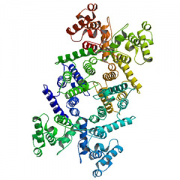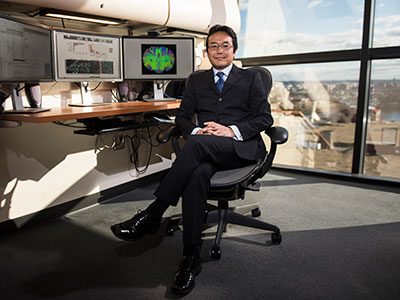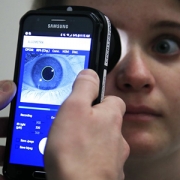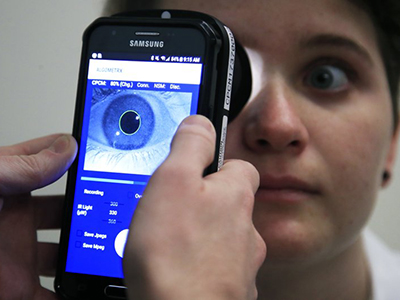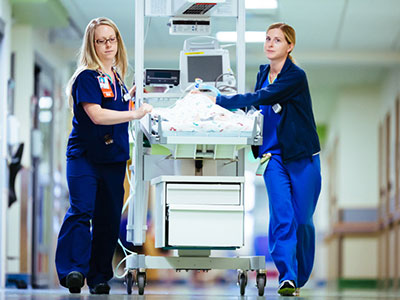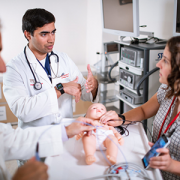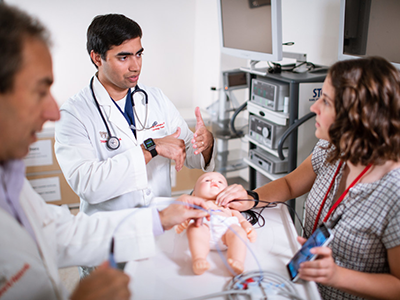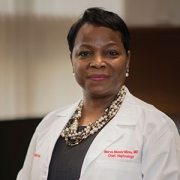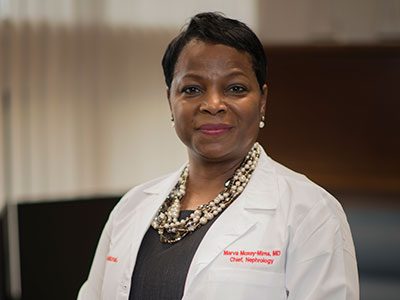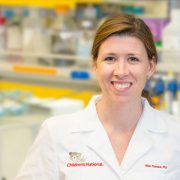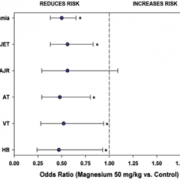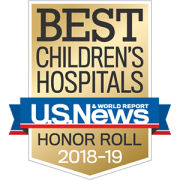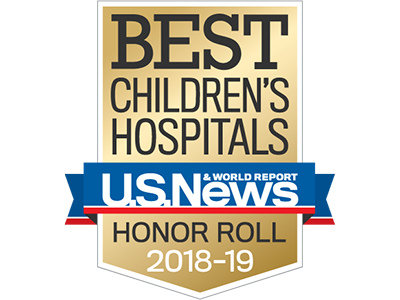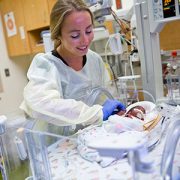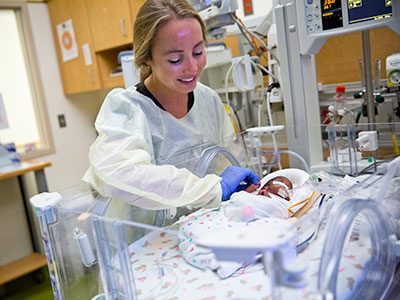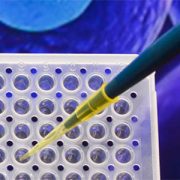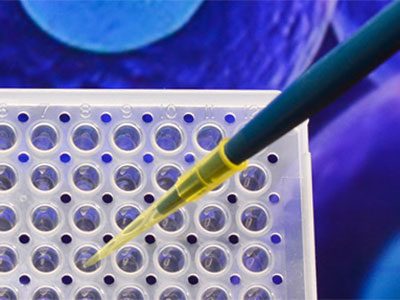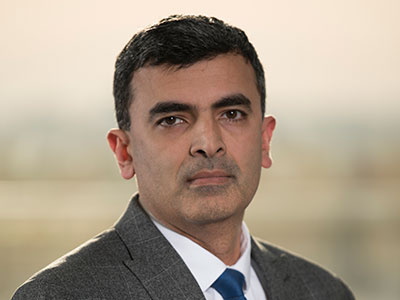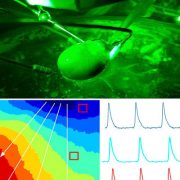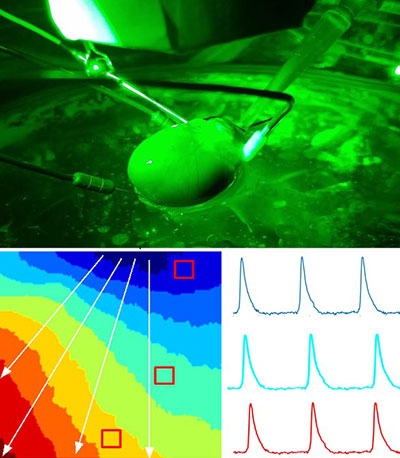
Children and teens exhibiting symptoms of orthostatic intolerance (OI) or gastrointestinal (GI) distress may benefit from a new diagnostic tool, pairing a tilt table test with manometry, which combines the two fields and can yield better results in some cases than testing for either symptom alone.
A combination of two diagnostic tools to test for cardiovascular and gastrointestinal function provides potential answers for patients left feeling sick and with inconclusive results.
Imagine you’re a pediatrician and see a teenage patient who complains of gastrointestinal (GI) distress: nausea, bloating and abdominal pain. She hasn’t altered her diet or taken new medications. An ultrasound of her internal organs from a radiologist comes back clear. You refer her to a gastroenterologist to see if her GI tract, a tube that runs from her mouth to the bottom of her stomach, and houses many organs, including the esophagus, intestines and stomach, has inflammation or structural anomalies. The symptoms, depending on the severity of the problem, could range from mildly irritating to intrusive, leading to missed days from work or school.
The gastroenterologist may analyze her GI tract with an endoscope and often takes a biopsy to look at a sample of the intestinal lining for lesions and inflammation. The results, like the ultrasound, may come back clear.
While an “all-clear” diagnosis is good news for patients awaiting the results of a test for a disease process, these results frustrate patients with chronic GI problems. Without a definitive diagnosis, these patients and their doctors often worry about ‘missing something’ and are left searching for solutions—and scheduling more tests.
Research published in The Journal of Pediatrics, entitled “Utility of Diagnostic Studies for Upper Gastrointestinal Symptoms in Children with Orthostatic Intolerance,” and discussed on Oct. 24 at the 2018 Single Topic Symposium at the Annual Meeting of the North American Society of Pediatric Gastroenterology, Hepatology and Nutrition (NASPGHAN), entitled Advances in Motility and in Neurogastroenterology (AIMING) for the future, now provides doctors with preliminary answers and a tool to test for orthostatic intolerance (OI).
The research team, a mix of cardiologists and gastroenterologists from Children’s National Health System, examined consecutive medical records of over 100 children and young adults with OI, a result of insufficient blood flow returning to the heart after standing up from a reclined position, which could result in lightheadedness or fainting, as well as gastrointestinal symptoms, including nausea and vomiting.
All patients had antroduodenal manometry, a test that uses a catheter, placed during an upper GI endoscopy, to measure the motility of the stomach and of the upper small intestines, in conjunction with a tilt-table test to measure blood pressure and heart rate changes with a change in posture. A gastric emptying study (GES) was performed in about 80 percent of the patients. The study found that antroduodenal manometry combined with the tilt-table test provided the best insights into adolescents and young adults with OI and GI symptoms.
Anil Darbari, M.D., MBA, a study author and the director of the comprehensive GI motility program at Children’s National, mentions the research highlights advances in the field of GI motility. It provides insights into the underlying pathophysiology of the conditions affecting the function of the GI tract and a roadmap to offer a multidisciplinary approach to help patients with sensory or motor GI motility problems, including those with OI or postural orthostatic tachycardia syndrome (POTS).
According to the National Institutes of Health, POTS is a form of OI, which affects more than 500,000 Americans, and most cases are diagnosed in women between the ages of 15 and 50. The cause of POTS is unknown but may begin after major surgery, trauma, a viral illness, pregnancy or before menstruation. The goal of treatment is to improve circulation and alleviate associated symptoms, including blurred vision, headaches, shortness of breath, weakness, coldness or pain in the extremities and GI symptoms, such as nausea, cramps and vomiting.
Dr. Darbari mentions that when his team and other GI motility doctors see patients for predominant GI symptoms, the patients may be frustrated because their primary GI providers often cannot find anything wrong with their GI tracts— based on the routine testing including laboratory studies, radiological tests and endoscopy with biopsy, at least that they can find. Dr. Darbari isn’t surprised since the symptoms of GI distress and POTS often overlap. Nausea is seen in up to 86 percent of OI patients, a number similar to lightheadedness, which affects 87 percent of OI or POTS patients.
“The physicians and GI specialists are frustrated because they can’t find anything wrong so they think the patient is making up these symptoms,” says Dr. Darbari. “It’s a dichotomous relationship between the patient and physician because of the traditional tests, which almost always come back normal. This is where the field of neurogastroenterology or GI motility comes in. We’re able to explain what’s happening based on the function or motility of the GI tract.”
Dr. Darbari mentions that combining these two fields—testing for cardiovascular function and GI motility—provides the science behind these sought-out answers. The problem, and pain that patients feel affects the neuro-gastro part of the intestine, as opposed to appearing as inflammation, lesions or structural damage.
When asked about how this research may change the field of gastroenterology, Dr. Darbari explains that it’s important to continue to study the underlying mechanisms that control these symptoms. More research, especially from the basic science point of view, is needed to look at how the nerves interact with the muscles. He hopes that scientists will look at the nerve and how the nerve is laid out, as well as how the GI function interacts with that of the cardiovascular system.
Understanding this relationship will help gastroenterologists better understand how to manage these conditions. Right now the solutions involve integrative therapy, such as prescribing sensory modulation, which could include pain management, behavior modification, massage therapy, aroma therapy, acupuncture, meditation and/or hypnotherapy, in addition to or in place of medications to decrease sensory perception in the GI tract. The treatment varies for each patient.
The prospect of giving families answers, and continuing to guide treatment based on the best science, is also what motivates Lindsay Clarke, PA-C, a study author and the coordinator of the GI Motility program at Children’s National, to continue to search for solutions.
“I spend a lot of time on the phone with these families between appointments, between visits, and between procedures,” says Clarke. “They have seen other gastroenterologists. They have had GI testing. Nothing comes back to show why they are feeling this way. This research gives them real information. We can now say that your symptoms are real. We’ve found the connection between what you’re feeling and what’s going on inside of your body.”
“It’s a huge quality-of-life issue for these patients,” adds Dr. Darbari about the benefits of having data to guide treatment. “These are often well-appearing kids. People, including medical professionals, often brush off their symptoms because the patients look good. They don’t have lesions or any redness or swelling, compared, for example, to patients with inflammatory bowel disease, who appear unwell or who have clear physical, laboratory and radiological findings. They don’t appear to be broken.”
The study authors note patient dissatisfaction, health care provider frustration, high costs of care and potentially hazardous diagnostic studies often accompany endoscopic and radiologic studies that fail to reveal significant abnormalities.
Clarke envisions that the use of the dual tilt-table test and antroduodenal manometry may also encourage families to explore multidisciplinary treatment earlier on in a patient’s life, such as physical therapy or sensory therapy, to alleviate symptoms and the overall number of outpatient visits. It provides them the understanding to enroll in a multidisciplinary and comprehensive programs, and programs that offer complementary therapies for management of these complex symptoms.
“This study shows that it’s important to look beyond individual organs and to treat the whole child,” says Clarke. “We’re still not sure about which kinds of sensory therapies work best and we don’t want to overstate the aims of integrative treatments, especially since it may vary for each child, but as clinicians we’re looking forward to talking to families about potential solutions, cautiously, as the science unfolds.”
Additional study authors include Lana Zhang, M.D., Jeffrey Moak, M.D., Sridhar Hanumanthaiah, M.B.B.S., and Robin Fabian, R.N., from the Division of Cardiology at Children’s National, John Desbiens, B.S., from the Division of Gastroenterology at Children’s National, and Rashmi D. Sahay, M.D., from the Division of Biostatistics and Epidemiology at Cincinnati Children’s Hospital Medical Center.



